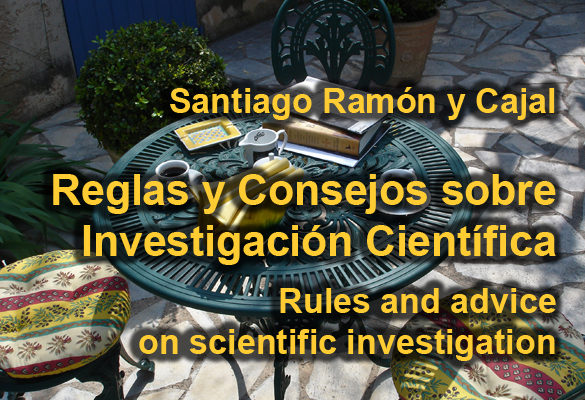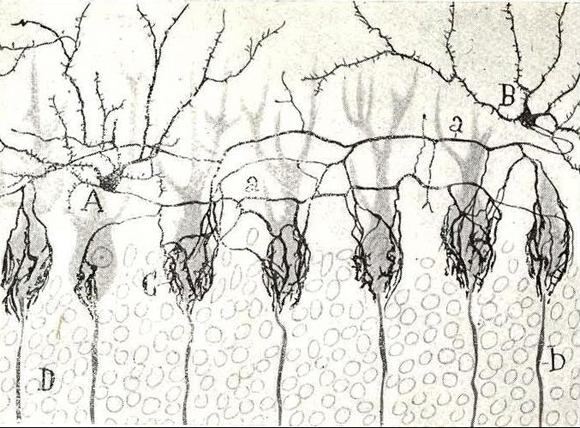


 panish wine can be very stimulating as can be discussions about the decline of the quality of science. Around the table of the Small Café different points were stressed, for instance that today a development giving rise to alarm is the scientific innocence of many people involved in research — as well as the deficiency of researchers who lack sufficient knowledge of bread-and-butter fundamentals. There is also fringe-science, pseudo-science and plain fake science. More on the topic of science can be found in this contribution.
panish wine can be very stimulating as can be discussions about the decline of the quality of science. Around the table of the Small Café different points were stressed, for instance that today a development giving rise to alarm is the scientific innocence of many people involved in research — as well as the deficiency of researchers who lack sufficient knowledge of bread-and-butter fundamentals. There is also fringe-science, pseudo-science and plain fake science. More on the topic of science can be found in this contribution.
Soon a Spaniard was mentioned: Santiago Ramón y Cajal. His personal experience made him write a unique advice for young investigators in the early stages of their careers, a manual of scientific work and publishing, worthwhile reading — nowadays also an untapped resource by older researchers and professors.
From his work, titled Reglas y Consejos sobre Investigación Científica — Rules and Advice on Scientific Investigation we have chosen Chapter II as an excerpt: Preocupaciones enervadoras del principiante — Daunting worries of the novice.
Ramón y Cajal followed the remarks of Alexander von Humboldt:
"In every age, small-minded people take great pleasure in believing that humanity has reached the culminating point of intellectual progress; they forget that, because of the intimate concatenation of all natural phenomena, the field one has to cross gains size as one advances, that it is surrounded by a horizon that backs away incessantly from the researcher."
Alexander von Humboldt: Kosmos. Entwurf einer physikalischen Welt. II, VI, 337. Stuttgart und Tübingen: J.W. Cotta'scher Verlag. 1847.

 antiago Ramón y Cajal was born on 1 May 1852 in Petilla de Aragón, a small village in Navarra in Northern Spain. His father was a barber-surgeon who some years afterwards acquired a medical degree — by hard work and considerable sacrifice. He later became professor of Applied Anatomy at the University of Saragossa, and persuaded his son to study medicine, which he did, chiefly under the direction of his father.
antiago Ramón y Cajal was born on 1 May 1852 in Petilla de Aragón, a small village in Navarra in Northern Spain. His father was a barber-surgeon who some years afterwards acquired a medical degree — by hard work and considerable sacrifice. He later became professor of Applied Anatomy at the University of Saragossa, and persuaded his son to study medicine, which he did, chiefly under the direction of his father.
At the age of twenty-five Ramón y Cajal obtained the degree of Doctor of Medicine at Madrid. In 1883 he was appointed to the chair of anatomy at Valencia, having in the meanwhile made himself, virtually without aid, a highly competent microscopist and histologist. He had also, while convalescing from tuberculosis, become a skilled photographer. In 1887 Ramón y Cajal was appointed to the chair of histology at Barcelona and, in 1892, to the chair of histology and pathological anatomy at Madrid, which he held until his retirement in 1922.

Santiago Ramón y Cajal was the foremost pioneer of research on the nervous system. He demonstrated the two fundamental concepts necessary to understand the function of the nervous system: the neuron theory and the law of polarity of neurons: that neurons are contiguous and that nerve impulses travel from the dendrites and soma to the nerve endings.
As a lot of ingenious scientists, he was self-taught in many areas. He was a pioneer in the truest sense of the word, especially in light of the technical resources of the day, and his scientific production was enormous.
In 1906 he shared the Nobel Prize in Physiology or Medicine with Camillo Golgi. He received the Prize for his contributions to the study of the nervous system and for his demonstration of the individuality of neurons. The picture of Ramón y Cajal that emerges from his own writings is full and candid. He was dedicated to neurohistology to the point of obsession. He appears as proud, ashamed of his country’s administrative inefficiency, corruption, and scientific backwardness. He was ambivalent in that he recognized the need to publish in one of the major scientific languages of Europe, but resented foreign ignorance of the language of Cervantes. He was intensely patriotic and determined that Spain should have a place on the scientific and intellectual stage.
He succeeded. →
| |
|
Santiago Ramón y Cajal: |
Contents
Presentation
Chapter II: Daunting worries of the novice
Home Page
All Contributions
Contenido
Presentación
Capítulo II: Preocupaciones enervadoras del principiante
Home Page
All Contributions